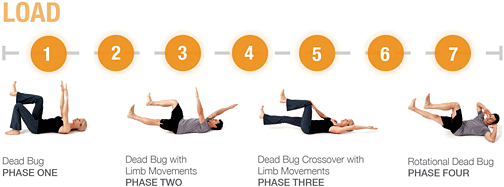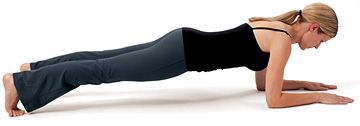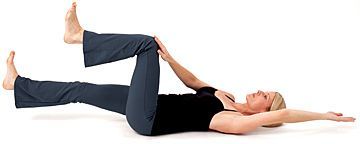Refund requests are an unavoidable part of running a chiropractic practice. Whether a patient is unhappy with their care, believes an adjustment caused harm, or simply changes their mind, these situations must be handled carefully to avoid escalation. While chiropractors are not legally obligated to issue refunds in most cases, there are times when doing so is the best business decision to protect the practice.
Start Moving Toward Active Care
At the core of chiropractic is our intent to help people live better, healthier lives. Often this is achieved by helping people maintain freedom of movement while improving their function to meet the needs of their daily activities. This is a great goal to work toward, but unfortunately, it is often overlooked. Many of us do not take full advantage of this opportunity by extending our in-office treatment to include active care programs the patient can do on their own.
Exercise has been shown to be the superior approach when it comes to resolving many of the musculoskeletal conditions chiropractors see on a daily basis. Yet even with an abundance of evidence to support active care, exercise is currently being underutilized within the chiropractic profession for the treatment of musculoskeletal conditions.
Using Activity to Help Your Patients Get Better
Roughly only a third of chiropractors prescribe corrective exercises for their patients. Why is this? Is it because there is a lack of education on what to provide the patients in the form of structured and progressive rehabilitation? Or is it a long-held belief that we have to first get the patient "better" and out of pain before engaging in activity? Either reason needs to be addressed to help enable front-line health care professionals such as chiropractors to employ active care within their prescribed plan of management.
For those who continue to feel that they need to "fix" the patient before engaging in active care programs, the current evidence supports implementing active care as soon as possible, given that you are not dealing with a severe injury. The level of engagement and load can be modified to meet the level of capacity for the individual patient and the phase of their injury. This can easily be determined by implementing dynamic evaluation strategies within your practice.
For practitioners who are not trained on how to implement rehabilitative programs, there are comprehensive rehabilitative programs already built. These can be used to extend active care within the practice setting and into the patient's home. This allows practitioners to deliver to their patients safe and structured programs for promoting accelerated recovery.
Many people shun a pre-planned, strategic approach to patient management and simply classify it as a "cookie-cutter" approach. On the contrary; a pre-planned, multidisciplinary approach is often necessary for optimal management of complex musculoskeletal injuries. Ease of implementation and a structured approach for the patient are just two of the supporting reasons. Many of these programs are available online, in DVD and via mobile-application formats.
Courses are also an alternative if you are looking to build your knowledge base in order to be able to design your own active care programs. Some of the leading experts teaching courses in the active care arena are chiropractors. In addition, we must not be afraid to learn from those outside of our profession. Knowledge and the health of our patients transcend our professional designation, so we should attempt to learn as much as we can. Understanding builds the foundation for change and you have to know the "why" in order to do the "what."

Why Active Care?
Let's consider some of the reasons why we would include active care into our plan of management. When a patient presents with an injury, their nervous system has invariably been affected to the degree that there is an alteration in reflexive joint stabilization and neuromuscular control. This leads to an increased chance of injury, as well as further strain being placed on the joints and muscles involved. In addition to motor changes in response to nociceptive input to the central nervous system, the pain pathways themselves can become altered through neuroplastic mechanisms. This may lead to an increased perception of pain, further negative motor adaptations at lower thresholds and an increased likelihood of developing chronic pain.
A study in the American Journal of Sports Medicine was even able to link damage to the anterior cruciate ligament with changes in brain plasticity. The results of this study support the hypothesis that peripheral joint injury leads to reorganization of the central nervous system, leading to neurophysiologic dysfunction. It also supports the existing evidence that central reorganization and neurophysiologic dysfunction likely occur in all spinal and peripheral joint injuries as a result of injury.

With new evidence linking injuries with changes in our nervous system, leading to motor changes and chronic pain, we need modern strategies to add to our therapeutic repertoire that can affect the same neural mechanisms in the direction of therapeutic intent. Effective rehabilitative training strategies should be engineered to facilitate more coordinated motor strategies following injury. This will help improve neuromuscular control and stabilization, leading to better recovery for the patient.
Injuries result because of an increase in the electromechanical delay between joint loading and protective muscle activation reducing joint stability and function. One of the most effective ways to treat this is through properly implemented rehabilitative programs. The amazing thing with modern rehabilitative strategies is that we can even train the unaffected limb if we are unable to train the injured limb, and we will still achieve a conditioning response. This is known as the crossover effect; I have used it in my practice successfully with patients who have suffered fractures.
Employing Active Care in Practice: A Clinical Scenario
Let's take a look at a clinical scenario. Whether through a chronically sustained repetitive strain such as poor sitting posture or a macrotraumatic insult, damage to the mechanoreceptors leads to alterations of the afferent input to the central nervous system, leading to a subsequent alteration in efferent output. The alteration in this afferent-efferent loop can be therapeutically influenced by a number of the treatment strategies employed by chiropractors. Reinforcing those treatment sessions and providing the stimuli necessary to create lasting change should be goal of active care.

In the case of chronic recurrent low back pain, it has been shown that key support musculature such as the multifidi begin to undergo histological changes where they get more fatty infiltration. This means that normal, healthy muscle tissue is replaced by fat. Avoidance and even reversal of this process would be one of the key objectives when performing exercises. Movements such as the bird dog and planking, as well as a host of other exercises, can be effective ways to stimulate the muscles back to health. Overlooking this step contributes to the increase in the prevalence in chronic, recurrent musculoskeletal conditions.
As chiropractors who have been principally trained in manual therapies, we should consider that treating a patient does not only involve putting our hands on them. Rehabilitation is a powerful way to treat your clients and it can put the tools to succeed in their hands. A patient who is not engaging in an effective active care program is at risk of having increased complications and failed treatment outcomes. Ultimately, patients who have the opportunity to be placed on an active care program – either prescribed or implemented by their health care practitioner – will have an increased likelihood of maximizing their restorative capacity.
When looking for rehabilitative programs to implement within your practice, choose programs that are progressive and systematic in design, and have been engineered to provide strategies to empower the patient. The principle reason for this model is that the stimulus of rehabilitation necessary to evoke lasting changes often exceeds the schedule for which patients are in your office; therefore, we must provide patients with the tools needed to be able to perform the exercise routines in the comfort of their own home – or even while at work.
Corrective exercises involved in rehabilitation programs that address chronic, recurrent conditions such as low back pain should be selected to stimulate a conscious connection between the participant and the movements that help activate kinesthetic awareness and neural drive to the key muscles involved with supporting and stabilizing the spine. The ability to activate a specific sector of functional movement patterns requires greater skill, as well as an increased level of conscious awareness. With an emphasis on quality of activation and movement control using a person's body weight, the greatest potential for recovery is attained due to the facilitation of the necessary neuromuscular plastic changes. Patients performing rehabilitation programs are not just exercising; they are performing precise movements and learning to control their body.
This focus on quality rather than on quantity of movement can be the key factor in whether a rehabilitative program will be successful. The exercises involved in this approach often utilize only body-weight. Once a patient is able to effectively control their own body-weight through a progressive series of physical challenges, they are then able to start adding different loading stimuli such as suspension-based training, external weights and unstable surfaces. Slowly increasing the complexity of the movement skills and the load provides a consistent new challenge that should build on the success of the previous phase.
Rehabilitation approaches that include an emphasis on re-establishing normal motor control strategies are fundamental in the treatment of musculoskeletal pain disorders and should be consistently included within your prescribed plan of management for your patients.
Resources
- Tsao, et al. Driving plasticity in the motor cortex in recurrent low back pain. European Journal of Pain, Feb. 22, 2010.
- Boudreau SA, et al. The role of motor learning and neuroplasticity in designing rehabilitation approaches for musculoskeletal pain disorders. Manual Therapy, 2010;15:410-414.
- Kapreli, et al. Anterior cruciate ligament injury causes brain plasticity: a functional MRI study. Am J Sports Med, 2009;37:2419-26.
- Arendt-Nielsen L, Graven-Nielsen T. Muscle pain: sensory implications and interaction with motor control. Clin J Pain, 2008;24:291-298.


